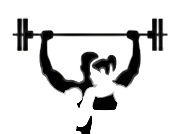Understanding Muscle Injuries: A Complete Guide
Athletes and active folks often get muscle injuries. Knowing about these injuries helps people handle and avoid them better. This blog gives you the key facts about muscle injuries. It covers the different kinds, what causes them how they feel, ways to treat them, and tips to stop them from happening. With this info, you’ll be better prepared to deal with muscle problems.

1. Types of Muscle Injuries
Muscle injuries can be broadly categorized into three types:
A. Muscle Strains
- Definition: A muscle strain, also known as a pulled muscle, occurs when a muscle is overstretched or torn.
- Grades:
- Grade I: Mild strain with minimal tearing and no loss of strength.
- Grade II: Moderate strain with more significant tearing and some loss of function.
- Grade III: Severe strain with a complete tear of the muscle or tendon and significant loss of function.
B. Muscle Scratch (contusion)
- Definition: A muscle contusion, or bruise, results from a direct blow or impact causing bleeding within the muscle.
- Severity: Contusions can range from mild to severe, depending on the force of impact and the extent of bleeding.
Muscle contusions are typically caused by:
- Direct Blows: Physical activities or sports where collisions are common (e.g., football, rugby, martial arts) can result in direct impacts that cause contusions.
- Falls: Falling onto a hard surface can result in a contusion, particularly on bony areas covered by muscles.
- Accidents: Car accidents or other traumatic events can lead to significant blunt force trauma and contusions.
C. Muscle Cramps
- Definition: A muscle cramp is a sudden, involuntary contraction of a muscle.
- Causes: Dehydration, electrolyte imbalances, overuse, and muscle fatigue are common causes of cramps.
Muscle cramps can be triggered by various factors, including:
- Dehydration: Lack of adequate fluids in the body can cause muscle cells to become irritable and prone to cramping.
- Electrolyte Imbalances (essential for basic life functioning): Low levels of minerals such as potassium, calcium, and magnesium, which are essential for muscle function, can lead to cramps.
- Overuse and Muscle Fatigue: Excessive exercise or physical activity can fatigue muscles, increasing the likelihood of cramps.
- Poor Blood Circulation: Reduced blood flow to the muscles can cause cramping, often seen in conditions like peripheral artery disease.
- Nerve Compression: Conditions like spinal stenosis can compress nerves, leading to muscle cramps.
- Medications: Some medications, such as diuretics and statins, can cause muscle cramps as a side effect.
- Medical Conditions: Conditions like diabetes, liver disease, and thyroid disorders can increase the risk of muscle cramps.
Causes of Muscle Injuries
Several factors can contribute to muscle injuries, including:
A. Overuse
• Repetitive stress on muscles without adequate rest can lead to overuse injuries.
B. Improper Technique
• Using incorrect form during physical activities can put unnecessary strain on muscles.
C. Lack of Warm-Up
• Failing to warm up before exercise can leave muscles unprepared for the stress of activity, increasing the risk of injury.
D. Fatigue
• Muscles that are fatigued are more prone to injury due to reduced strength and coordination.
E. Direct Trauma
• Blows or impacts to the muscle can cause contusions or tears.
3. Symptoms of Muscle Injuries
Identifying muscle injuries involves recognizing the following symptoms:
A. Pain
• Pain at the site of injury, which may be sharp or dull, is a common symptom.
B. Swelling
• Swelling and inflammation around the injured area can occur.
C. Bruising
• Bruising or discoloration may appear, especially in the case of contusions.
D. Weakness
• Muscle weakness or loss of strength can be a sign of a more severe injury.
E. Limited Range of Motion
• Difficulty moving the affected muscle or joint can indicate an injury.
4. Treatment of Muscle Injuries
Effective treatment of muscle injuries typically involves the following steps:
A. Rest
Allowing the injured muscle to rest and recover is crucial.
B. Ice
Applying ice to the injured area can help reduce swelling and pain.
C. Compression
Using compression bandages can minimize swelling and provide support to the injured muscle.
D. Elevation
Elevating the injured area can help reduce swelling.
E. Medication
Over-the-counter pain relievers and anti-inflammatory medications can help manage pain and inflammation
5. Prevention of Muscle Injuries
Preventing muscle injuries involves taking proactive measures, such as:
A. Proper Warm-Up
Always warm up before engaging in physical activity to prepare muscles for the demands of exercise.
B. Stretching
Incorporate stretching exercises to improve flexibility and reduce muscle tension.
C. Strength Training
Regular strength training can enhance muscle resilience and reduce the risk of injury.
D. Hydration
Staying hydrated is essential to prevent muscle cramps and maintain overall muscle function.
E. Proper Technique
Ensure you use the correct technique and form during physical activities to avoid unnecessary strain on muscles.
Conclusion
Understanding the various aspects of muscle injuries, including their types, causes, symptoms, treatment, and prevention, can help you manage and mitigate the risk of these injuries. Whether you’re an athlete or someone who engages in regular physical activities, taking the necessary precautions and seeking appropriate treatment when needed can ensure your muscles stay healthy and strong.







